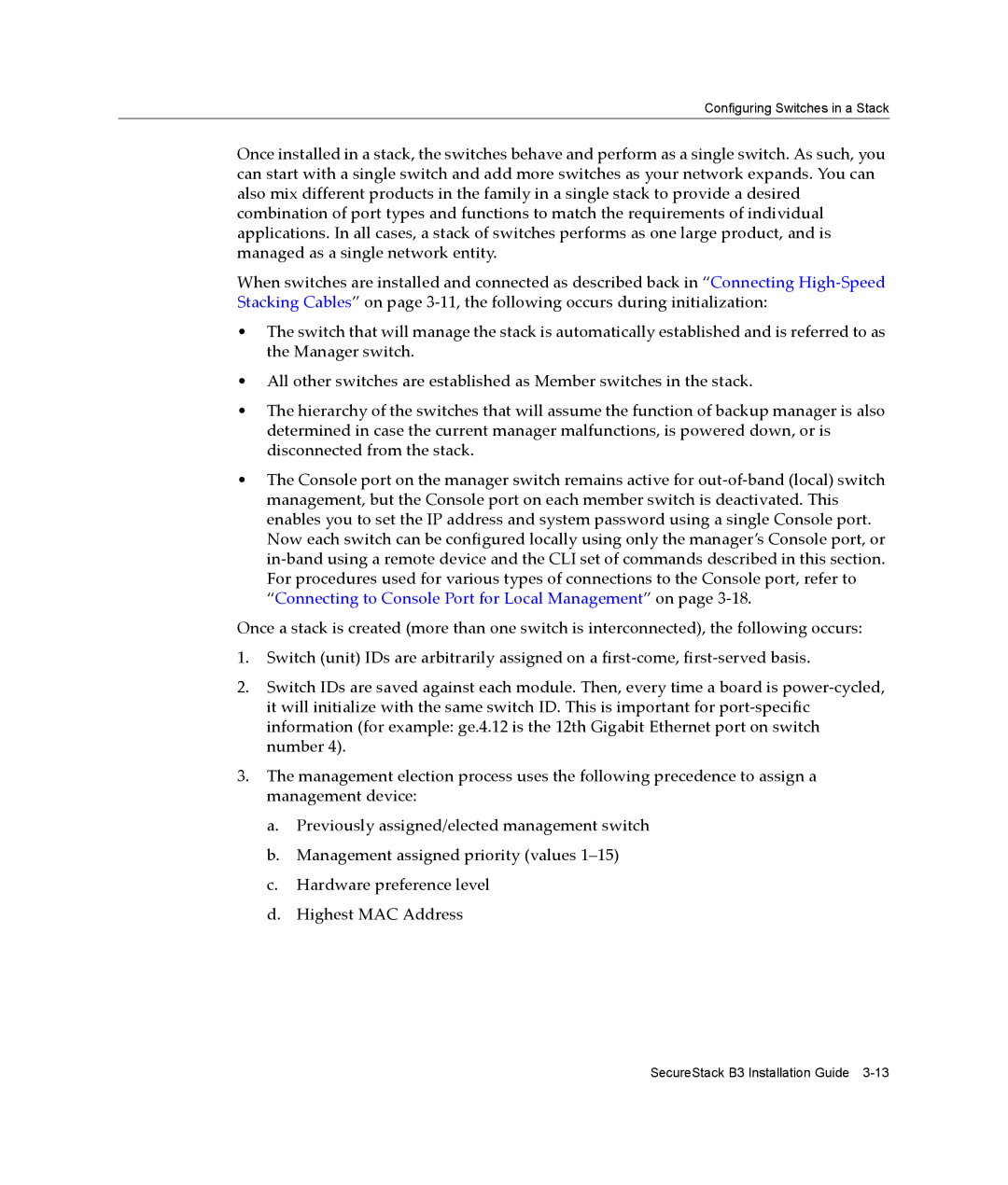Configuring Switches in a Stack
Once installed in a stack, the switches behave and perform as a single switch. As such, you can start with a single switch and add more switches as your network expands. You can also mix different products in the family in a single stack to provide a desired combination of port types and functions to match the requirements of individual applications. In all cases, a stack of switches performs as one large product, and is managed as a single network entity.
When switches are installed and connected as described back in “Connecting High‐Speed Stacking Cables” on page 3‐11, the following occurs during initialization:
•The switch that will manage the stack is automatically established and is referred to as the Manager switch.
•All other switches are established as Member switches in the stack.
•The hierarchy of the switches that will assume the function of backup manager is also determined in case the current manager malfunctions, is powered down, or is disconnected from the stack.
•The Console port on the manager switch remains active for out‐of‐band (local) switch management, but the Console port on each member switch is deactivated. This enables you to set the IP address and system password using a single Console port. Now each switch can be configured locally using only the manager’s Console port, or in‐band using a remote device and the CLI set of commands described in this section. For procedures used for various types of connections to the Console port, refer to “Connecting to Console Port for Local Management” on page 3‐18.
Once a stack is created (more than one switch is interconnected), the following occurs:
1.Switch (unit) IDs are arbitrarily assigned on a first‐come, first‐served basis.
2.Switch IDs are saved against each module. Then, every time a board is power‐cycled, it will initialize with the same switch ID. This is important for port‐specific information (for example: ge.4.12 is the 12th Gigabit Ethernet port on switch number 4).
3.The management election process uses the following precedence to assign a management device:
a.Previously assigned/elected management switch
b.Management assigned priority (values
c.Hardware preference level
d.Highest MAC Address
SecureStack B3 Installation Guide
